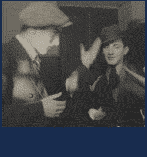




Shechitah - Laws Concerning Ritual Slaughter
The slaughter of animals to be cooked for kosher food must be highly regulated. The slaughtering process starts with concern about the inspection of the animals, followed by the knives to be used. The laws of shechitah outline in specific detail exactly how an animal should be slaughtered in order to qualify as kosher. The specificity of the laws accounts for the emergence of a very important character in Jewish communal life: the shoychet. Jews, unlike their non-Jewish neighbors, could not themselves just pick a chicken from their yard to use to prepare a meal. Neither could they hunt an animal to kill and cook for a meal. Traditional Jews the world over depend on a shoychet to inspect all animals according to the extensive Jewish laws, to possess and properly maintain kosher knives. In these ways the shoychet renders meat kosher for the community.


From the Old Rules, to the New "Cuisine" - Where a Jewish Meal Begins
Another familiar figure in the market was the kosher butcher, the katzef; but he had an altogether different image. The katzef was a simple salesman who handled the food. Responsibility for keeping food kosher continued at home, where the meat has to be salted and soaked in prescribed ways. Only after that process can the cooking begin. So, any kosher meat required a shoychet, as well as a housewife who knew how to keep the rules at home. Today, most of the salting and soaking is done at the butcher store, and the meat delivered ready to cook.














